The Minolta CLE had always intrigued me as a lighter body alternative to my heavier Leica M bodies, like the M3, M6, and M7, while still being compatible with my Leica M-mount lenses all in a compact package about the same size as my Fuji X100T, or 1970s era fixed lens rangefinder compacts like the Olympus 35RC.
Minolta no longer services these cameras, and there are not many people who can. I bought mine from one of the few shops that still does, Shimbashi Camera around the Okachimachi area of Tokyo, where they had just overhauled a CLE along with its M-Rokkor 40mm f/2 lens. The price was right and I bought it.
Rather than being a diet soda version of a Leica M as I had expected, the Minolta CLE is a full octane camera, brilliant in its own right, and even gives Leica M bodies a run for the money. The finder is beautifully clear with a decent focus patch. There are only three frames, 28mm, 90mm, and the unusual 40mm frame that appears elsewhere only on the Leica CL, presumably upon which the Minolta CLE is based and improved. Minolta had manufactured the CL for Leica until Leica abruptly and rudely pulled the plug as buyers began opting for the CL over the unfortunately designed Leica M5. The 28mm frame in the CLE finder is completely viewable in its entirety even with glasses, unlike the 28mm frame in the Leica M .72x finders, in which you cannot view the 28mm frame all at once whether you wear glasses or not. If you like to shoot 28mm, the CLE is a far better option than any standard Leica M.
The base length of the Minolta CLE is shorter that that of the Leica Ms. That is to say the two rangefinder windows used for focusing are closer together. I often hear people say that because the focus cam is different, regular Leica lenses won’t focus properly on the Minolta CLE, but this is only an urban camera legend. I suspect it was invented by Leica marketing people to prevent lenses made for the Leica CL and the Minolta CLE from cannibalizing sales of other Leica lenses, and the same for Leica bodies, as these versions cost substantially less. The shorter base length of the finder windows only means that focus accuracy is more challenging, particularly with a 90mm lens. You might need to get the camera aligned with whatever 90mm lens you might be using–and even then the frame and focus patch is too small and hard to see in my opinion!

So what about the lenses? Minolta produced Rokkor lenses for each of the frames sizes. In addition to the 40mm f/2, there are also a 28mm f/2.8 and a 90mm f/4. The Leica CL also had its own range of Leica-C lenses, although the ones sold in Japan were branded as Rokkor, not Leica. So if you happen to find a Rokkor 40mm f/2 that is built to the same specs as the Leica Summicron-C, rest assured it is the same lens, only it was originally sold in the Japan market.
In any case, apart from some wide angle models whose rear element may extend too deeply into the interior of the camera and perhaps a collapsible Elmar, any M-mount lens will work perfectly fine on the Minolta CLE. So if you already have any M-mount 28mm, 40mm or 90mm lenses, these will do just fine. If you mount a 50mm lens, the CLE will choose the 40mm frame. I am not sure what happens when mounting a 35mm lens though. If any reader does, perhaps you could post a comment. Forget using any of the made for the M3 Leica 35mm lenses with corrective optics. Because of the shorter base length, the optics won’t align properly with the rangefinder windows.
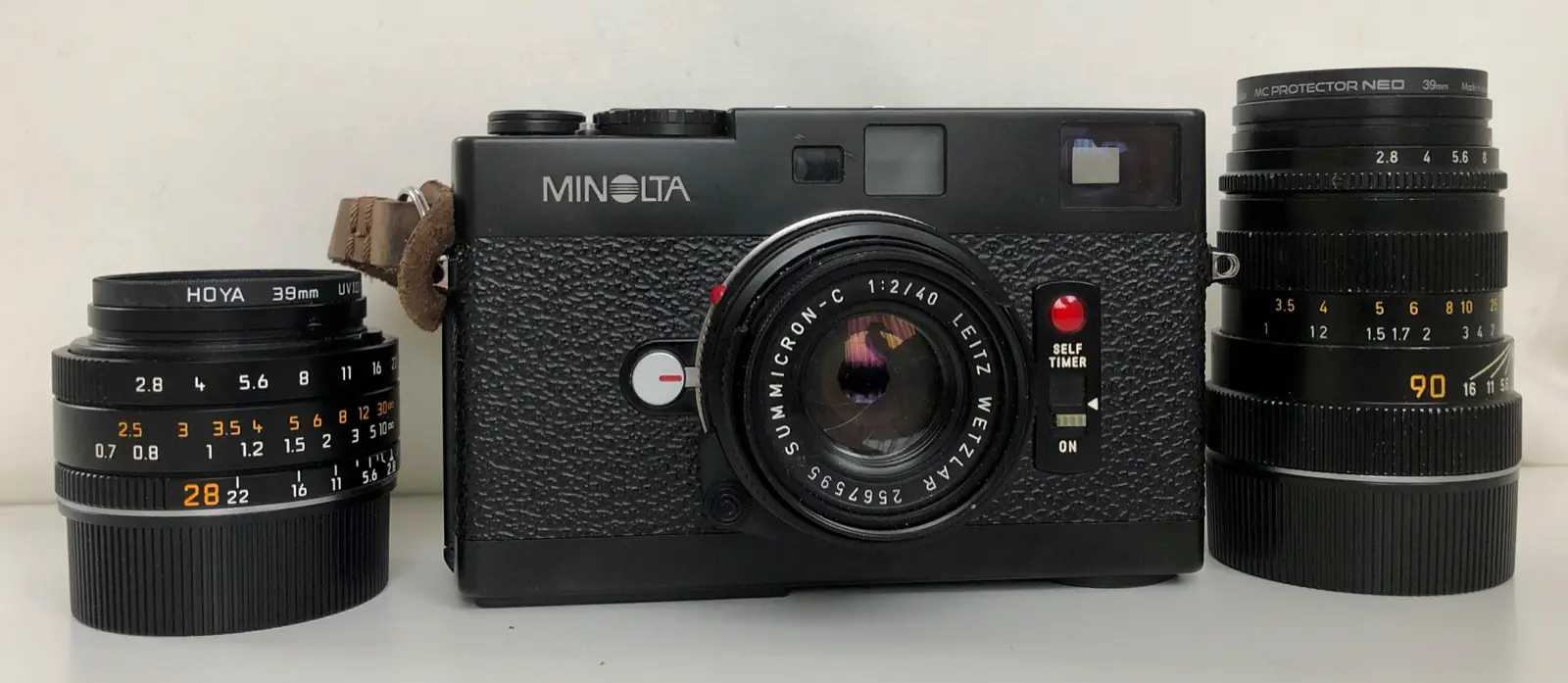
For the 40mm focal length, your options are more limited. Leica produced a Summicron-C 40mm f/2, which is a superb lens, although the build quality is slightly inferior to standard Leica lenses in my opinion. Minolta’s Rokkor 40mm f/2, made for the CLE, is just as good as the Summicron-C in my opinion. I cannot distinguish results between the two. Build quality is about the same. The Summicron-C however is slightly more compact than the Rokkor. The Rokkor takes a standard 40.5 mm lens filter. The Summicron takes a Series V lens filter which has no thread, and requires its own unique hood in order to mount it. For the life of me, scouring eBay, I have never been able to find all of the hood and filter elements for this. This is frustrating, because I tend to always use lens filters rather than leaving the lens element directly exposed to the world. I’d rather scratch a lens filter than a lens element! You can use standard 39mm filters with the Summicron-C 40mm, but the threads, which were presumably designed for the hood attachment, are slightly different. You can get away with screwing in the lens filter gently until its stops, but don’t tighten or you will strip the threads! Voigtlander also currently sells several 40mm M-mount options, although I have no idea of their quality. If you have experience with these lenses, perhaps you can post a comment.

So is it crazy to purchase a 40mm lens just for use on the Minolta CLE? In my opinion, no. The CLE like the Leica CL, was designed for the 40mm focal length, which is the same or about the same used on many a brilliant cameras including the Contax T2 and most of the fixed lens rangefinders of the 1960s and 1970s made by Olympus, Minolta, Ricoh and others. You can use the 40mm lens on Leica M cameras, but they call up the 50mm frame. In my experience wearing glasses, the 40mm frame corresponds almost exactly to the entire viewable area of a .72x finder.
With the Minolta CLE, I shoot mostly with a Leica Elmarit-M 28mm f/2 ASPH. and a Leica Summicron-C 40mm f/2. These are the most compact, lightest Leica M-mount lenses ever made. So if you are traveling, the CLE body and these two lenses are the most Zen of M-mount kits.
Occasionally, I will shoot with the tiny yet superb Voiglander 21mm f/4 with an external finder. I find the Minolta CLE is ideal for this lens. Also, I have from time-to-time just for fun, attached my Leitz LTM Hektor 2.8cm f/6.3 pancake lens with an adapter.

I’ve shot with my 90mm Tele-Elmarit, but I really don’t recommend shooting with a 90mm lens on the Minolta CLE if you have Leica M body option. The focus patch is just too small for 90mm, as is the frame.
As a street photography camera, the Minolta CLE is hard to beat. The camera is so compact, I can slip my CLE with the 40mm Summicron into a jacket pocket pretty comfortably. The CLE feels good in the hand, and is incredibly light. In some respects, it is almost too light. You need to pay attention to camera shake. Apart from a few gaudy, overpriced special editions, the CLE is black and discrete.
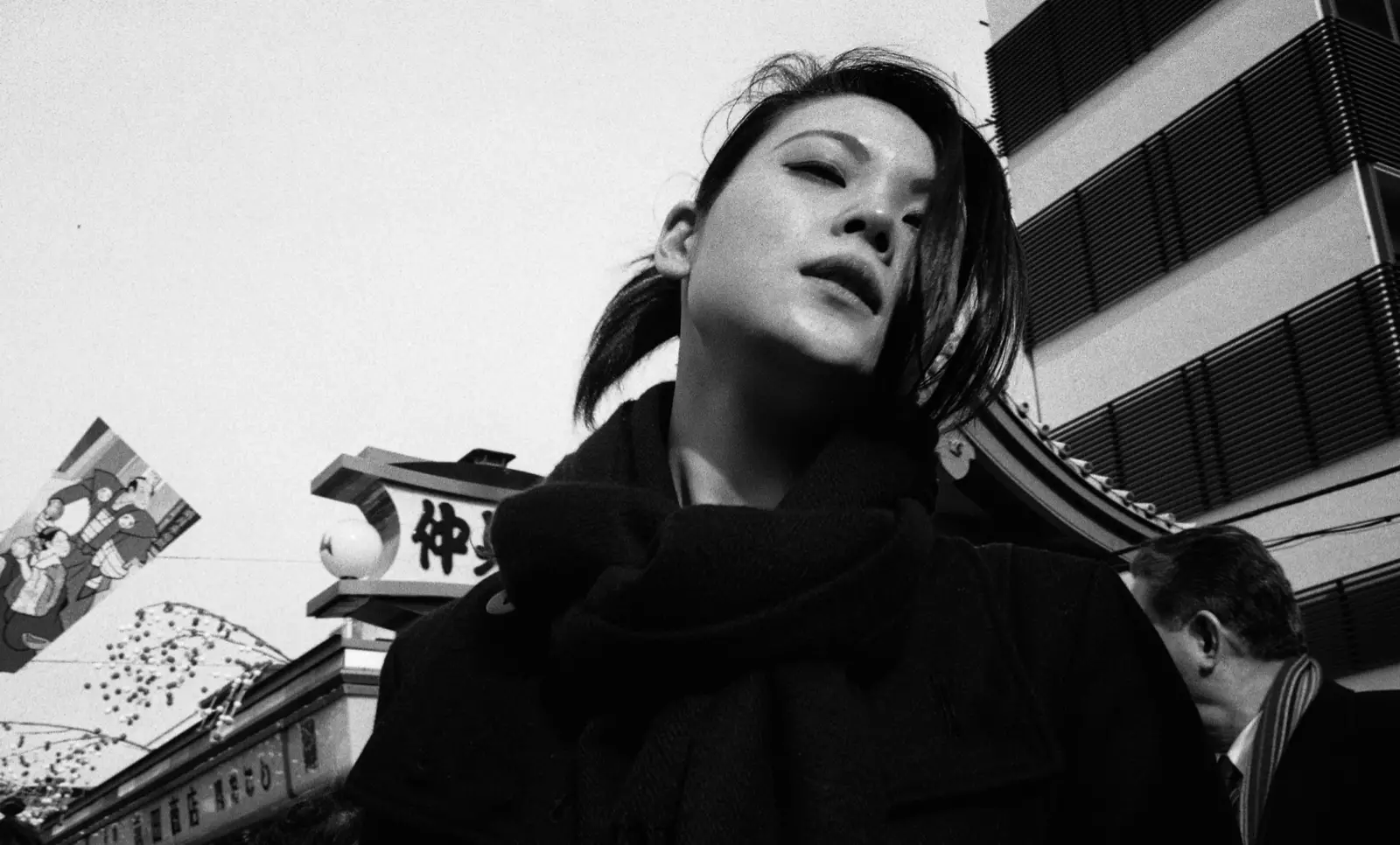
The Minolta CLE has an electronic shutter and an automatic exposure mode. Shutter speeds appear to the left of the finder frame, with red LED lights illuminating next to the appropriate speed, far niftier than say the primitive LED number display in the Leica M7 finder. The shutter release button is smooth and rounded, and has touch sensitivity. Just lightly brushing your finger across it activates the light meter, a spiffy feature nowhere to be found on any Leica.
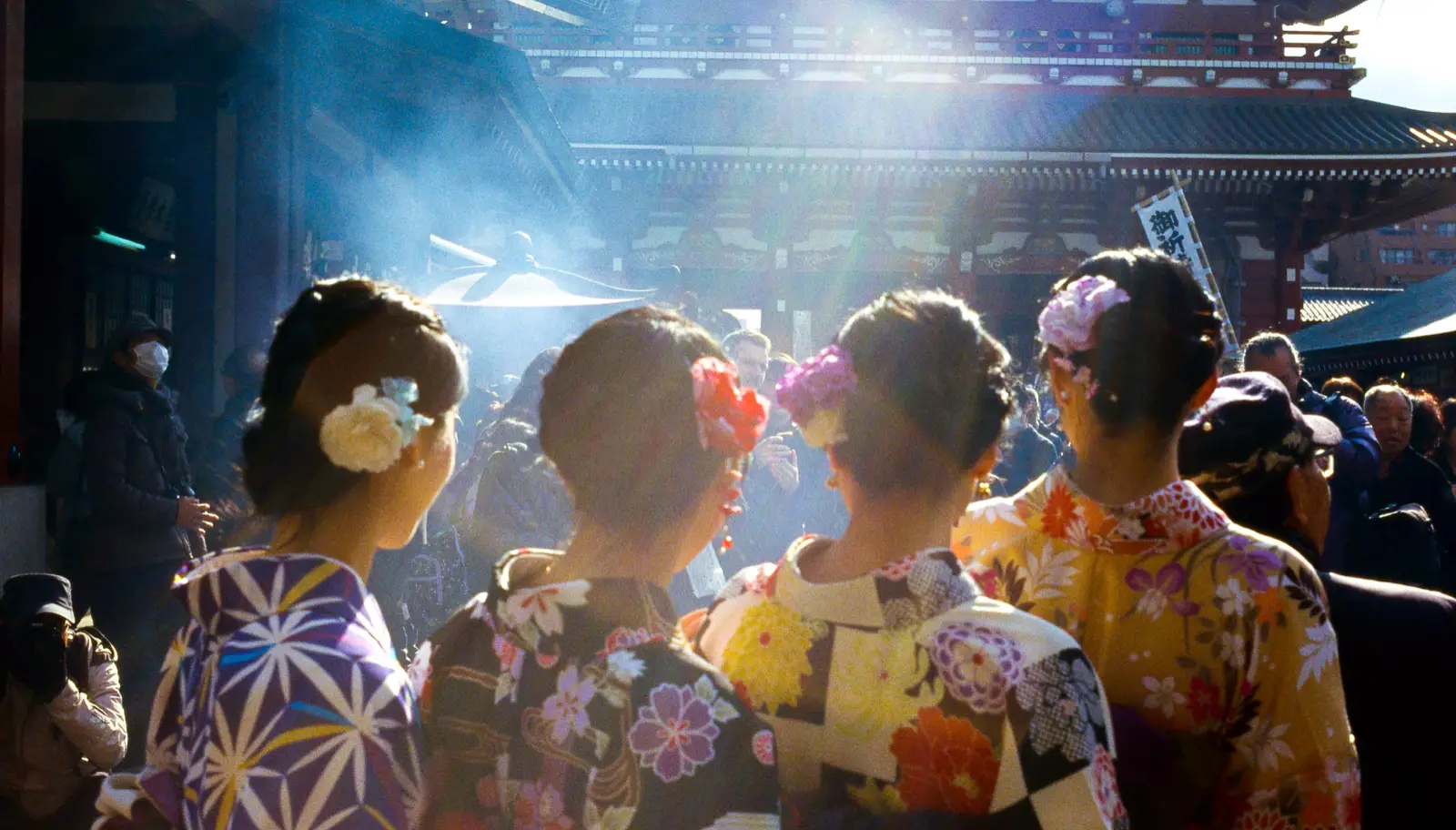
Unfortunately there is no AE lock, which I find I kind of miss. If you want to lock the shutter speed, you have to set it manually. There is a dial on the top plate for doing this, which is easily rotatable. However, there is a little silver button by the dial that must be depressed to unlock the dial from AE mode. It took me a while before I realized that could be easily done with one finger in one motion when adjusting. Unfortunately, shutter speeds are not indicated in the finder when shooting manually, but this is no big deal. It’s just like shooting a Leica M3.
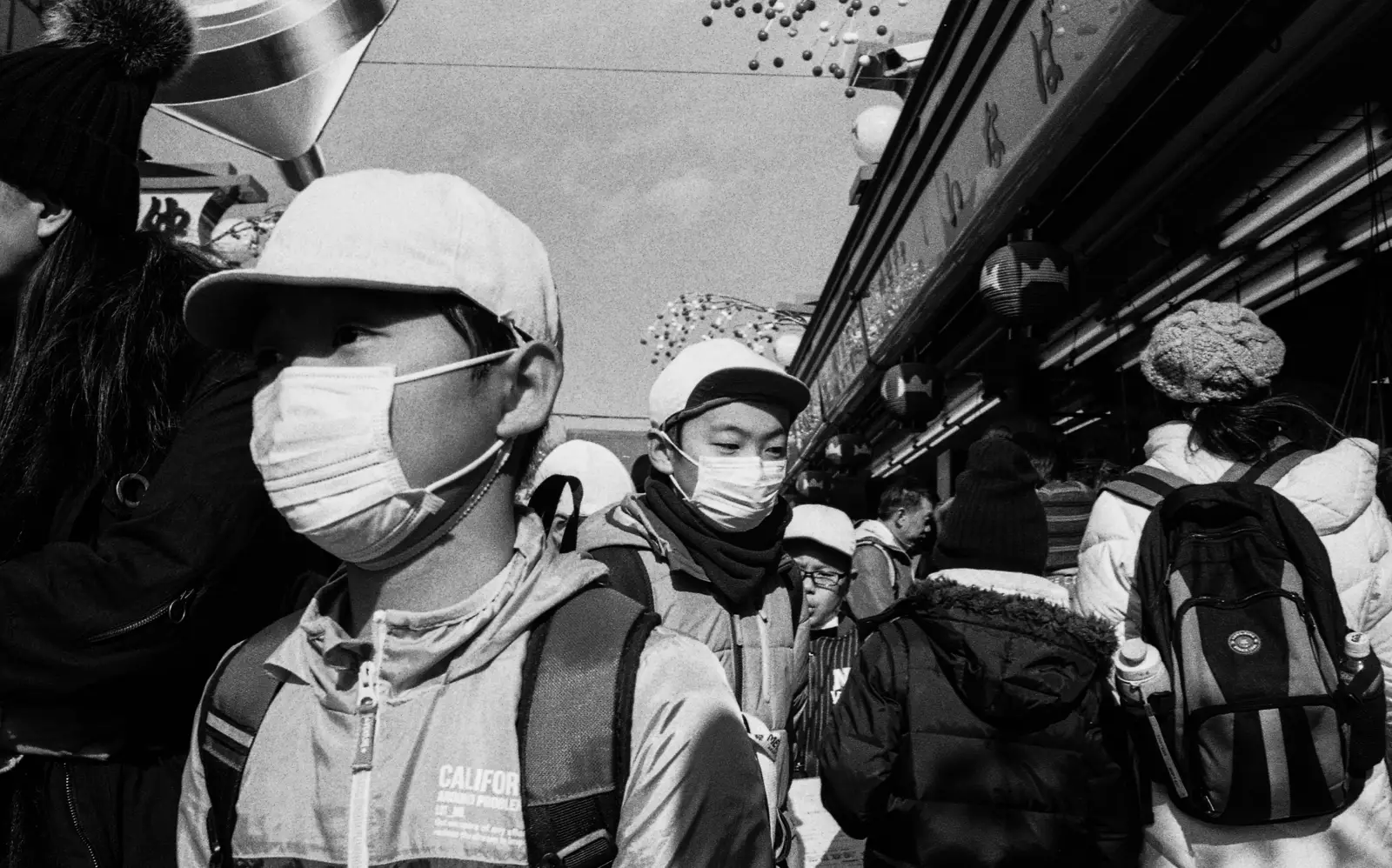
The Minolta CLE for all its wonderful attributes is no Leica M. It leans a tad plasticky. The CLE both sounds and feels like plastic. The shutter release sound is not a smooth whisper like a Leica M. Rather, the camera makes a cheap clackety-clack sound that comes off as dissonant given the superb finder, spiffy touch sensitive shutter release button, and nifty illuminating LEDs in the frame. The body seems solid enough, but the film advance lever and the shutter speed dial are plastic.
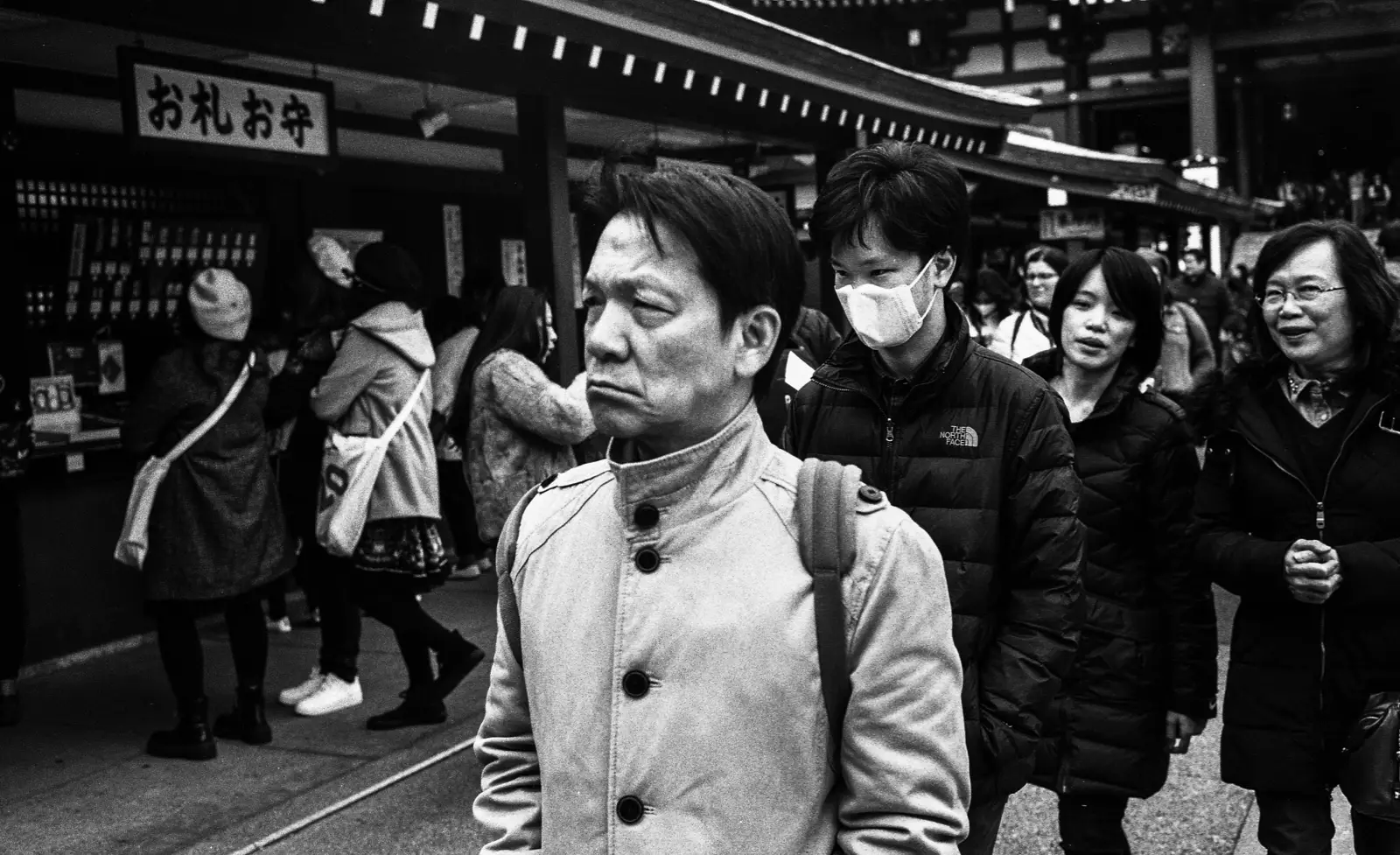
The film rewinder is by crank, but on the bottom of the camera. The Leica Ms all rewind clockwise. The Minolta CLE rewinds counter-clockwise, so pay attention! To open the back of the camera after rewinding, just pull out the rewinder a notch, give it a half rotation same direction as rewinding, and the hinged back door will unlock and pop open, opening to the side. No detachable bottom plate like on all the Leica M bodies! Film loading is a breeze, and I consistently get at least thirty-eight or even thirty-nine exposures on a roll of film depending on the brand.
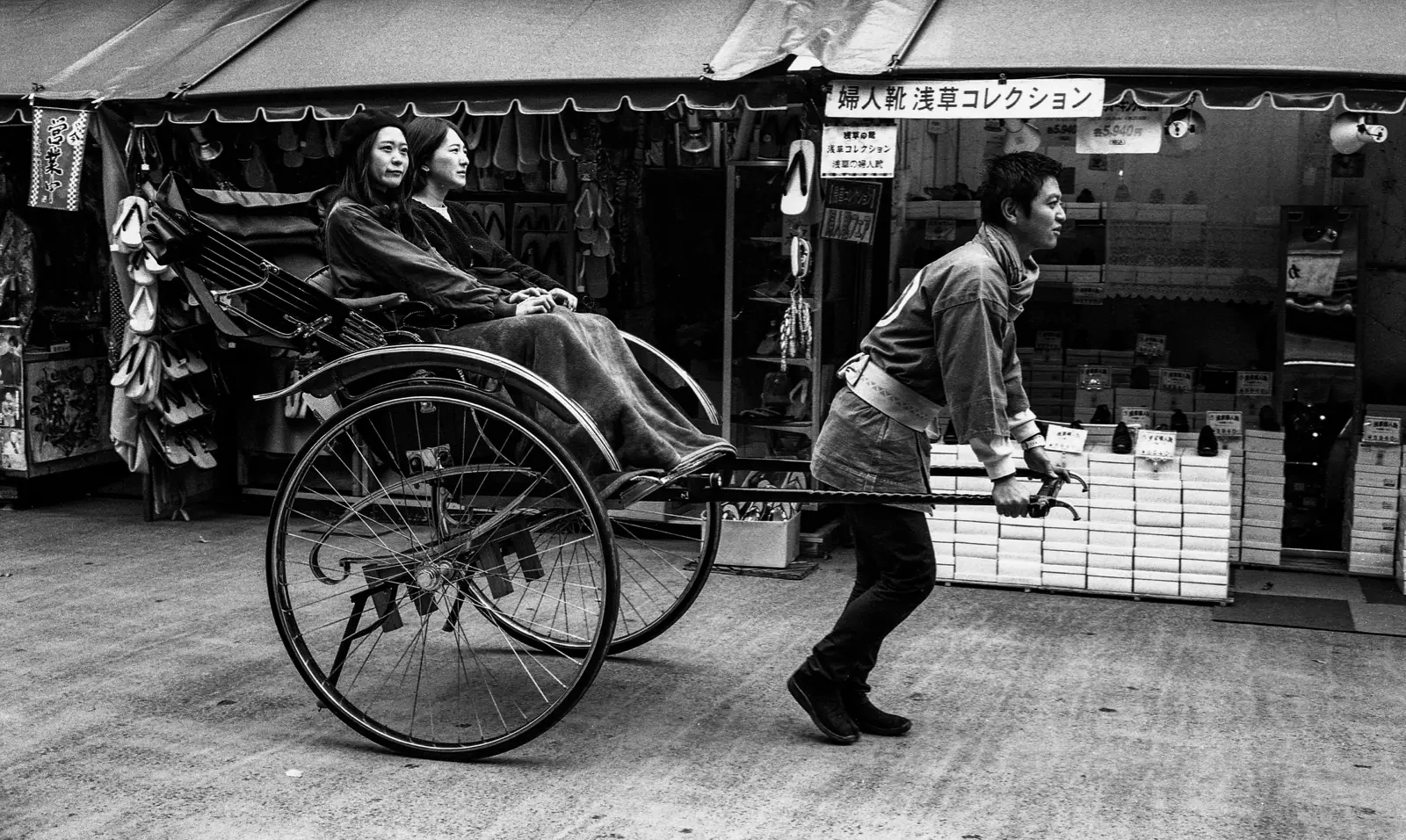
Is the Minolta CLE worth owning? Yes. It is a superb M-mount camera in its own right for sure, but what about as an alternative to a Leica M? Well, perhaps. It all depends on your preferences and priorities—and of course on your budget! You can usually get a Minolta CLE with a Rokkor lens together for less than the cost of a Leica M3 body, only that the M3 will still need an overhaul when you buy it!
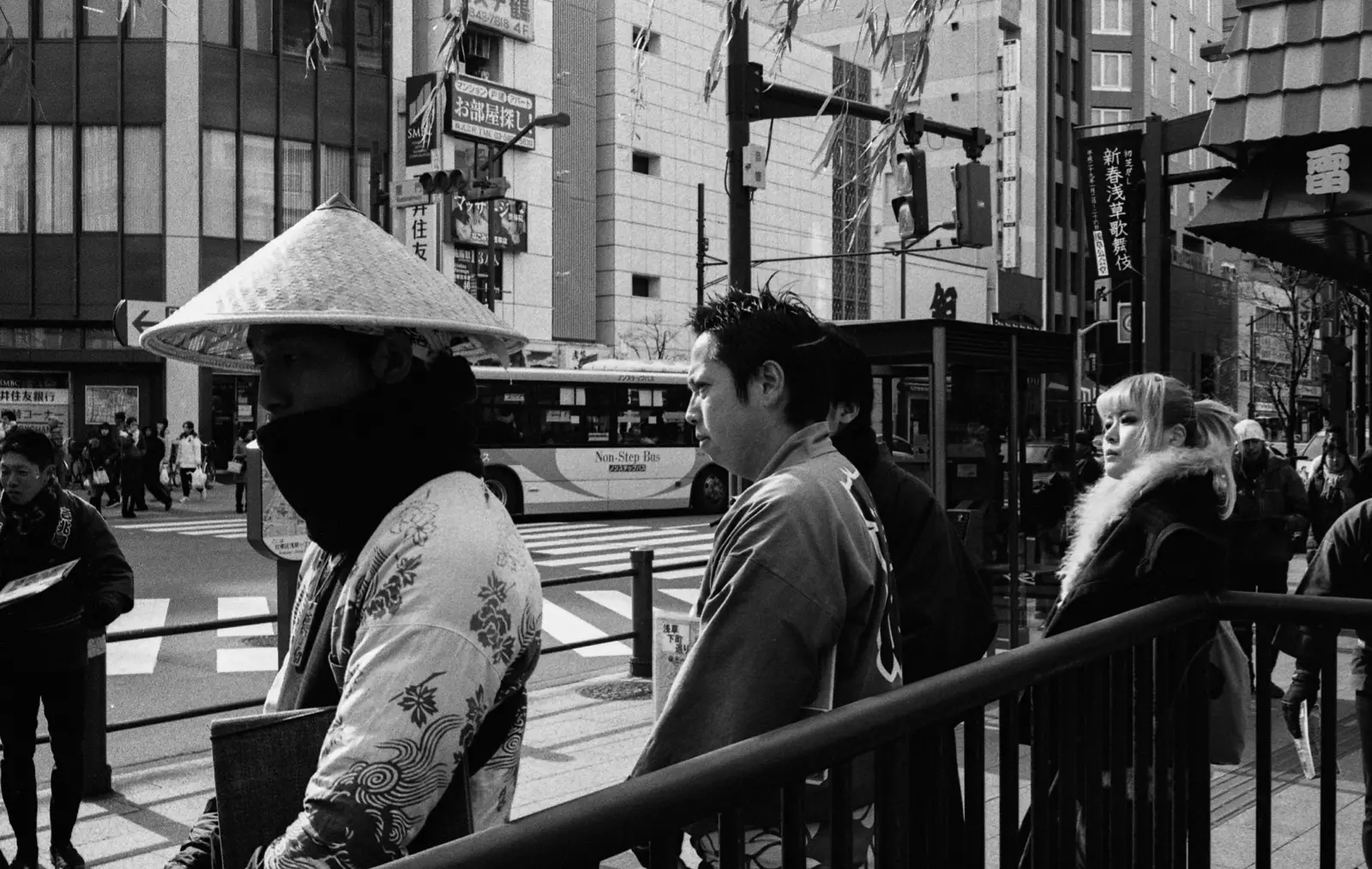
If you own a Leica M is the CLE worth getting? Maybe. It allows you to use your 28mm, and 90mm M-mount lenses natively, and you get a frame for the distinct 40mm M-mount lenses. A Minolta CLE enables you to pack an M-mount kit that is lighter and more compact than any Leica M. If that appeals to you, go out and get a Minolta CLE, the most Zen of all M-mount cameras. You won’t be disappointed.
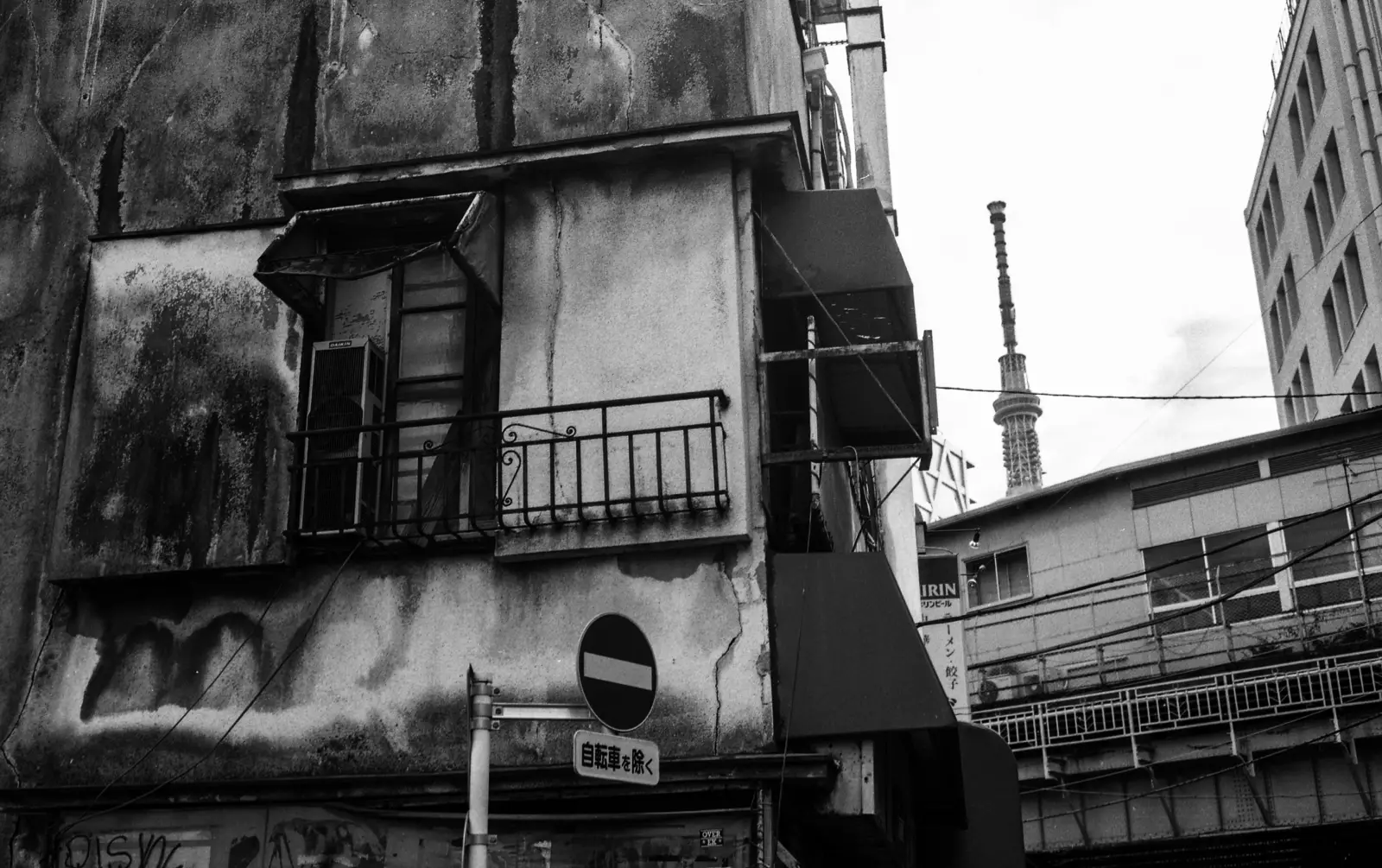
I am a street photographer who lives in Japan. If you would like to see more of my work, have a look at my website bleisteinphoto.com, or my Instagram @sbleistein.
Another review of the Minolta CLE can be found over on Casual Photophile here
Share this post:









Comments
Dan on Minolta CLE Review: The Most Zen of M-Mount Rigs – Steven Bleistein
Comment posted: 08/02/2019
David hill on Minolta CLE Review: The Most Zen of M-Mount Rigs – Steven Bleistein
Comment posted: 08/02/2019
Using a 35mm lens brings up the 28mm frames lines. Or so I’m told.
Comment posted: 08/02/2019
Calum on Minolta CLE Review: The Most Zen of M-Mount Rigs – Steven Bleistein
Comment posted: 08/02/2019
Comment posted: 08/02/2019
anil mistry on Minolta CLE Review: The Most Zen of M-Mount Rigs – Steven Bleistein
Comment posted: 08/02/2019
Comment posted: 08/02/2019
Victor on Minolta CLE Review: The Most Zen of M-Mount Rigs – Steven Bleistein
Comment posted: 08/02/2019
Comment posted: 08/02/2019
Daniel Castelli on Minolta CLE Review: The Most Zen of M-Mount Rigs – Steven Bleistein
Comment posted: 08/02/2019
I had a Leica CL. It was an early production model, so it had it's share of bugs. It went out for repair a couple of times, but I just lost confidence in it - wondering when the next thing would go wrong. It went in as a trade for a Leitz-Minolta CL. These versions had all the early production bugs worked out, and essentially were sold to the domestic market in Japan. My version was bought by a US serviceman and brought back to the US. It's a gem with a working exposure meter! I have it coupled with the equally fine M-Rokkor 40mm f/2.0. These lens works well on my M2 & M4-P. I've shot with my 50mm Planar (M) on the CL with great results.
I carry the CL as my everyday, 'walk-about' camera. Compact, light but not flimsily, easily slipped into a pocket. Loaded with 400 speed, B&W film, it's my version of an artist's mall sketch book. When we travel, it's my second back-up camera.
Comment posted: 08/02/2019
StephenJ on Minolta CLE Review: The Most Zen of M-Mount Rigs – Steven Bleistein
Comment posted: 08/02/2019
I am in the slightly different halfway house position of having a Leitz CL, which is the original version developed by Leitz and I believe, built by Minolta, this camera does not have the frame-lines for a 28mm lens, even though it does have them for 50mm.
I do have the phantom Leitz 40mm Summicron with its rubber hood and a skylight filter as mentioned above, though so far I have failed to find a yellow or yellow/green filter for black and white.
Other differences are that the camera is basically manual, with an M5 style spot meter mounted on a little wavy arm that swings into position between the lens and the shutter for composition, and then swings out of the way for taking.
I am given to understand that many of these do not work any longer, mine works fine, however the camera is not exactly pristine, and the meter is a bit "off". I am not sure whether this is because it has been adjusted to take modern batteries and I am using the voltage converter... or whether it is just old. Either way, the real benefit of the CL over the CLE is that when these things do eventually break, the CL is still a usable manual camera.
The CLE has a number of benefits over the CL too, so as in everything it is horses for courses. As you say, the CLE has automatic aperture priority, whereas when working, the CL is effectively a manual aperture priority camera. You decide on your aperture and then adjust the shutter speed manually until you get the desired speed.
It is of course, no accident that many of those compact cameras from the 60's and 70's used 40mm lenses along with the Minolta/Leitz offerings, apparently that length is closest to what we peeps see when we just use our eyes... It represents the most normal of normal lenses.
I have an LTM Leica iii and an M4, and I like them all, as well as my digital Leica CL, but that 40mm lens does mean that I often find myself wandering around with this little oddity more often than not.
It's a pity that Leica took such a dismissive view of it when they believed that it was interfering with their M5 sales. The reality is that despite its similarities to the CL, the M5 is not a nice camera to handle, and I would say that it was the M5 that was at fault, not the CL/CLE, or the customers for buying them.
Despite their little quirks and the danger that the Minoltas will eventually pack up altogether, they are truly the essence of M style photography... As you say.... the Zen M.
Comment posted: 08/02/2019
Calum on Minolta CLE Review: The Most Zen of M-Mount Rigs – Steven Bleistein
Comment posted: 08/02/2019
Comment posted: 08/02/2019
Comment posted: 08/02/2019
Comment posted: 08/02/2019
Graham Line on Minolta CLE Review: The Most Zen of M-Mount Rigs – Steven Bleistein
Comment posted: 09/02/2019
It's an easy camera to handle and I use it alongside an M4-P with no problems going back and forth.
HJB on Minolta CLE Review: The Most Zen of M-Mount Rigs – Steven Bleistein
Comment posted: 09/02/2019
Comment posted: 09/02/2019
Minh Truong on Minolta CLE Review: The Most Zen of M-Mount Rigs – Steven Bleistein
Comment posted: 09/02/2019
I have the voigtlander 40mm f1.4. The biggest issue was the aperture ring will come loose and you will need to get it fix.
I'm looking at getting a 28mm for my CLE. I feel that that's the focal length it was meant for (I use a 35mm to bring up the 28mm to shoot around).
Comment posted: 09/02/2019
Daniel Castelli on Minolta CLE Review: The Most Zen of M-Mount Rigs – Steven Bleistein
Comment posted: 09/02/2019
Comment posted: 09/02/2019
Andrea Cabras on Minolta CLE Review: The Most Zen of M-Mount Rigs – Steven Bleistein
Comment posted: 09/02/2019
Comment posted: 09/02/2019
xin Wu on Minolta CLE Review: The Most Zen of M-Mount Rigs – Steven Bleistein
Comment posted: 11/02/2019
At the end when I want to travel lighter I have my 2 options. The Minolta Hi-Matic 7Sii with is crazy sharp Rokkor certainly the best Fixed lense rangefinder of the 70's with the Canonet, and my second option is my lovely Contax T which was one of last camera of HCB. This Contax T is a marvelous camera. My problem with the CLE is electronic, it will finish as a paper weight, the Minolta Hi-Matic is playable to repair, the Contax T is more difficult to fix, the M3 is easy to repair.
I like the Summicron C because it is easy to sale for a good price as all Leica lenses. The Rokkor 40 mm delivers great images. For 90 I use also the Tele_Elmarit from Canada and despite is flare issues it is so sharp and contrasted, little soft on corner at 2'8 but at 5'6 no difference with other new brand Leica, is special advantage is compactness, one of the smaller 90 mm with 2'8 aperture and Leica Signature. !!!
You want a great 40 mm carrier choose a Leica CL for little size or a Rollei 35 RF !
My contribution.
Photos are wonderful ! It remembers my walks on Tokyo looking for special cameras.
Comment posted: 11/02/2019
Alistair Murray on Minolta CLE Review: The Most Zen of M-Mount Rigs – Steven Bleistein
Comment posted: 14/02/2019
The M-mount can set three focal length settings via variations in the length of the bayonet lug opposite the release button. As standard, Leica sets three pairs of framelines (where available), 28 90, 35 135, and 50 75.
The CL makes no use of the 35 135 pair and the 40mm lenses use the 50mm setting.
Minolta took advantage(?) of the redundant 35 135 setting to allow their 28mm M-Rokkor to display only the permanent 28mm frameline, while other 28mm lenses will also bring up the 90mm frame.
So far, so good.
The problems happen when you want to use your cracking wee 28/2.8 M-Rokkor on a Leica or Zeiss body, where it will be seen as a 35mm lens...
I'm sorely tempted to acquire a proper 28 90 bayonet for mine.
Comment posted: 14/02/2019
Simon Sheldon on Minolta CLE Review: The Most Zen of M-Mount Rigs – Steven Bleistein
Comment posted: 15/02/2019
I have two CLE Bodies, so yes love them, I use the Voigtlander 40mm f1.4 and other of the smaller Voigtlander lenses, they all work really well with the CLE and although I have two Voigtlander bodies the CLEs are much nicer to use.
Comment posted: 15/02/2019
Christopher Woo on Minolta CLE Review: The Most Zen of M-Mount Rigs – Steven Bleistein
Comment posted: 16/02/2019
Kam Chan on Minolta CLE Review: The Most Zen of M-Mount Rigs – Steven Bleistein
Comment posted: 23/06/2019
Alex on Minolta CLE Review: The Most Zen of M-Mount Rigs – Steven Bleistein
Comment posted: 15/10/2019
Papih on Minolta CLE Review: The Most Zen of M-Mount Rigs – Steven Bleistein
Comment posted: 15/10/2019
I came across a decent looking cle and cl. And still thinking which one to get. I prefer the AE, but the prospect of suddenly it’s a non working camera scared me. Thanks for info.
Comment posted: 15/10/2019
jh on Minolta CLE Review: The Most Zen of M-Mount Rigs – Steven Bleistein
Comment posted: 11/01/2020
Richard Arbib on Minolta CLE Review: The Most Zen of M-Mount Rigs – Steven Bleistein
Comment posted: 23/01/2020
Richard Arbib on Minolta CLE Review: The Most Zen of M-Mount Rigs – Steven Bleistein
Comment posted: 23/01/2020
Comment posted: 23/01/2020
Ted Town on Minolta CLE Review: The Most Zen of M-Mount Rigs – Steven Bleistein
Comment posted: 24/02/2020
I really wanted to like it, the whole idea of a compact camera with great glass and auto-exposure. It was a real step up from the zone focusing of the Minox and the Rollei, and as a news photographer it was a relief to carry something that wasn't going to make my "Nikon neck" worse. But I just never really got the hang of rangefinder focusing.
When the circuitry died about five or six years ago, and nobody would repair it, I sold it. Knowing what I now knew about rangefinders, I decided there was little point in keeping the lens.
But like I said, I really wanted to like it.
Comment posted: 24/02/2020
The Most Read and Commented upon Posts Published on 35mmc in 2019 - 35mmc on Minolta CLE Review: The Most Zen of M-Mount Rigs – Steven Bleistein
Comment posted: 12/05/2020
Bruce E on Minolta CLE Review: The Most Zen of M-Mount Rigs – Steven Bleistein
Comment posted: 26/06/2020
As for lenses - mostly used with with Voigtlanders - 40mm 1.4 (excellent, bit larger than the Rokkor/Summicron, never had a chance to compare image quality), 21mm (excellent small lens), and 15mm (a favourite). Also tried it with the Voigtlanader 35mm 1.2, which is a bit too big on this body, but was pleased to see it focus quite accurately even wide open. As others mention in comments, a 35 brings up only the 28mm finder frame, so I refer this camera with a 40mm.
BK Lim on Minolta CLE Review: The Most Zen of M-Mount Rigs – Steven Bleistein
Comment posted: 06/07/2020
Comment posted: 06/07/2020
Ron Peters on Minolta CLE Review: The Most Zen of M-Mount Rigs – Steven Bleistein
Comment posted: 23/07/2020
Comment posted: 23/07/2020
Tommaso on Minolta CLE Review: The Most Zen of M-Mount Rigs – Steven Bleistein
Comment posted: 22/01/2021
I like very much the camera ergonomics but if feel a bit uncomfortable with the viewfinder. It looks too small to me, and not enough bright,
Is there maybe any external magnifier that one che mount on it?
Comment posted: 22/01/2021